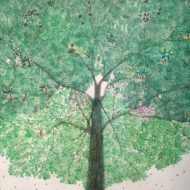In the final session of the conference, Sabine Niederer presented the launch of the first book dedicated entirely to the urban screens theme, The Urban Screens Reader. The book was edited by Scott McQuire and Meredith Martin from the University of Melbourne and Sabine Niederer from the Institute of Network Cultures. The Urban Screens Reader …
Author Archives: liliana
Urban Screens Conference Reports
The Urban Screens conference which took place in Amsterdam on the 4th of December this year is the fourth in a series of events which has been organized around the theme of display screens (LED signs, plasma screens, projection boards, intelligent architectural surfaces, etc.) in urban spaces. It supports the idea of using public space as a platform for creation …
Light as Artistic Medium: Paul Klotz (and the Meaningfulness of Interactive Features in Media Artworks)
Paul Klotz is an applied art engineer and light designer who specializes in interactive light installations for public spaces. By means of light and sound installations which create a feedback loops between the passerby and the installation upon physical interaction with the artwork, he attempts to set up in public spaces artistic zones which captivate, …
Juha Van ‘T Zelfde on the Role of ‘Urban Informatics’ and The ‘Cloud City’ in Urban Redevelopment
Juha Van ‘t Zelfde spoke at the Urban Screens conference in Amsterdam (December 4, 2009) in behalf of VURB, a foundation located in Amsterdam which focuses on policy and design research concerning urban computational systems. His presentation focused on what might be called ‘urban informatics’. VURB endorses the development of ‘urban informatics’ as a potential …
Theo Watson: Start Your Own Graffiti Research Lab!
Theo Watson is one of the members of Graffiti Research Lab, an art group which brings together hacking and graffiti writing into digital graffiti as a form of communication in urban spaces. The organization is based in New York and now has other nodes Mexico, Vienna, and Amsterdam, where Theo is located. The group experiments …
Continue reading “Theo Watson: Start Your Own Graffiti Research Lab!”
Mettina Veenstra on How Public Screens Can Help Build Social Capital
Mettina Veenstra is principal researcher and coordinator of the theme public screens at Novay Research. Novay is a Dutch research institute for ICT driven innovation. Her presentation at the Urban Screens conference in Amsterdam on the 4th of December this year focused on what public displays can do for public space in terms of stimulating encounters and …
Continue reading “Mettina Veenstra on How Public Screens Can Help Build Social Capital”
Nanna Verhoeff: Mobile Digital Cartography from Representation to Performance of Space
Nanna Verhoeff, associate professor in the department of Media and Culture studies at Utrecht University, had one of the very few yet very welcomed theoretical presentations at the Urban Screens conference which took place on the 4th of December this year in Amsteram. Her contribution focused in particular on mobile screens (such as mobile phones, PDA’s and GPS …
Social Network Sites as Stages of ‘Dramaturgical Performance’ – Interpretation Sketch
A study of the University of Georgia describes as more likely to be narcissist those Facebook users who have a large number of friends and wallposts, narcissism in this case being defined as an emphasis on self-promotion and quantity of friends. The use of Facebook to emphasize self-promotion, that is considered to be narcissism in …
Book review: “Media Work” by Mark Deuze
As technologies develop, media diversifies its platforms and products, and becomes more and more present and involved in our lives, building barthesian myths around every object surrounding us, which consequently turns our every act: production, purchasing, consumption, etc., into a cultural experience. But the changes that media has been undergoing due to the development of …
Control Rates in User Generated Content: PoliticalBase.com, the Moderated Political Wikipedia
Technological developments, resulting in free user-friendly interface applications, led to the second step in the evolution of the World Wide Web, the Web 2.0. The Web 2.0 reflects a paradigm shift, from the “read web”, another platform of mass communication, whose advantages over the traditional media were in terms of functionality: better storage of large …
